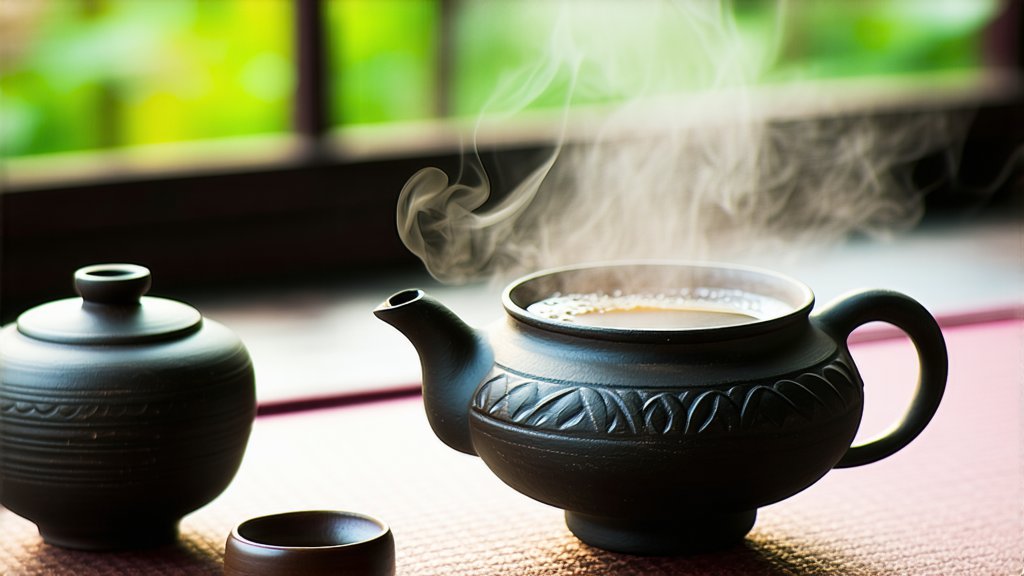
Chinese black tea, often referred to as "hong cha" in Mandarin, represents one of the most iconic and widely enjoyed categories within the vast spectrum of Chinese tea culture. This article embarks on a journey through the rich history, diverse varieties, intricate craftsmanship, and nuanced tasting techniques associated with this golden elixir.
History
The origins of black tea in China date back to ancient times, though it was during the Tang Dynasty (618-907 AD) that tea began to be more broadly cultivated and consumed. However, the production of black tea as we know it today gained prominence much later, particularly during the Qing Dynasty (1644-1912). It was then that the unique fermentation process was refined, giving rise to the distinctive flavor profiles that characterize Chinese black teas.
One of the earliest forms of Chinese black tea is Keemun, which hails from the Qimen County in Anhui Province. Its creation is attributed to a serendipitous event where green tea leaves were left to wither for an extended period before being processed, leading to their darkening and acquiring a new flavor profile. This accidental discovery paved the way for the development of various other black tea varieties across different regions of China.
Varieties
Chinese black teas are as diverse as the landscapes from which they originate. Some of the most renowned varieties include:
-
Keemun: Often considered the quintessential Chinese black tea, Keemun is known for its smooth, malty flavor and hints of fruit and floral notes. It is especially popular in blends like English Breakfast Tea.
-
Yunan Dian Hong: Produced in Yunnan Province, Dian Hong is famous for its bold, full-bodied flavor with a distinct earthiness and occasional smoky undertones. It is often enjoyed on its own or used in blends.
-
Lapsang Souchong: Known for its distinctive smoky aroma and taste, Lapsang Souchong is produced in Wuyi Mountain, Fujian Province. The smoking process gives it a unique character that sets it apart from other black teas.
-
Jin Jun Mei: Translating to "Golden Tips," Jin Jun Mei is a premium variety from Fujian Province known for its delicate sweetness and floral fragrance. It is often compared to high-quality Indian Darjeeling teas.
-
Gongfu Black Tea: This term refers to a method of preparation rather than a specific type of tea. Gongfu black tea involves multiple short steepings, allowing the drinker to appreciate the tea's complex flavors and aromas fully.
Craftsmanship
The production of Chinese black tea involves several meticulous steps, each contributing to the final product's quality and characteristics. Here’s an overview of the traditional craftsmanship involved:
-
Withering: Freshly plucked leaves are spread out in thin layers to wilt under natural conditions or in controlled environments. This step reduces moisture content and initiates the enzymatic activity that leads to fermentation.
-
Rolling: The withered leaves are rolled either manually or using machines. Rolling breaks down cell walls, releasing enzymes and juices, which further facilitate fermentation.
-
Fermentation: The rolled leaves are allowed to ferment, a process during which polyphenols oxidize, turning the leaves brown and developing the characteristic flavors of black tea. The duration and conditions of fermentation can vary, influencing the tea's final taste and aroma.
-
Drying: After fermentation, the leaves are dried to halt oxidation and reduce moisture content to prevent mold growth. Drying can be done through sun drying, oven drying, or a combination of both.
-
Sorting and Grading: Once dried, the tea leaves are sorted and graded based on size, shape, and quality. High-grade leaves often retain more tips and have a more uniform appearance.
Tasting Techniques
Appreciating Chinese black tea goes beyond merely drinking; it involves engaging all senses to fully experience its complexity. Here are some key techniques for tasting:
-
Visual Examination: Observe the dry leaves for their color, shape, and consistency. High-quality leaves should be evenly shaped and free from impurities.
-
Aroma: Before brewing, smell the dry leaves to detect any initial scents. As the leaves unfurl during brewing, take note of the evolving aromas.
-
Brewing: Use freshly drawn water heated to around 90-95°C (194-203°F). Steep the leaves for about 3-5 minutes, adjusting based on personal preference and the specific tea variety.
-
Tasting: Take small sips, allowing the tea to coat your palate. Pay attention to the balance between astringency, sweetness, and body. Note any subtle flavors or aftertaste.
-
Multiple Infusions: Many Chinese black teas can be steeped multiple times, with each infusion revealing different aspects of the tea's character. Adjust steeping times progressively longer for subsequent infusions.
In conclusion, Chinese black tea is not just a beverage but a cultural heritage that encapsulates centuries of tradition, innovation, and artistry. Whether you're a seasoned connoisseur or a curious newcomer, exploring the world of tea, diving into the realm of Chinese black tea promises a rewarding and enriching experience.